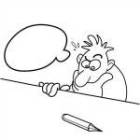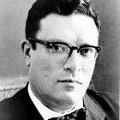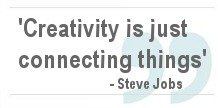How To Invent Something

How do you invent something? How do you get new ideas? How does it happen?
We surveyed our readers for their answers to these questions. The responses we received were enlightening.
We all need ideas, whether it's for projects we're working on or tasks we're performing.
But our best creative ideas seem to come when we're not trying to think of any. They're equally elusive when we're trying our hardest to make them happen.
But is that "Eureka!" moment that creates an ingenious idea just a flash of inspiration? Is it a talent enjoyed by those who are creatively gifted? Or Is it something else?
Over fifty years ago, Isaac Asimov wrote a telling essay on this very subject. The essay was submitted as his contribution to a secret project created by the Defense Advanced Research Projects Agency (DARPA), an agency of the United States Department of Defense.
How To Get New Ideas

Asimov's essay was only recently released and it begins with the following question, "How do people get new ideas?"
In answering this question, Asimov takes an interesting approach. He investigates the phenomenon known as "multiple independent discovery."
Multiple Independent Discovery occurs when a great idea is realized by two or more individuals simultaneously, and independently, from one another.
Asimov searches for the factors that led these individuals to have the same realizations at the same time in hope of finding a common denominator that could explain how people get great ideas.
The historic instances of multiple independent discovery are more prevalent than one would believe.
Here are some examples:
the discovery of electromagnetic induction in 1831 by Michael Faraday in England and independently by Joseph Henry in the United States.
the invention of the electrical telegraph in 1837 by Charles Wheatstone in England) and by Samuel Morse in the United States
the invention of the telephone in 1876 by Alexander Graham Bell and independently by Elisha Gray
and the invention of the integrated circuit in 1958 by Jack Kirby and independently by Robert Noyce.
Cross-Connections
Asimov concludes from his research that the most obvious common factor between these individuals is their capability to "cross-connect" existing concepts and facts that might not ordinarily seem connected.
 This
is known as "recombinant
conceptualization" where a new concept arises through
the crossing of existing concepts and facts.
He uses
the theory of evolution to demonstrate
how this works.
This
is known as "recombinant
conceptualization" where a new concept arises through
the crossing of existing concepts and facts.
He uses
the theory of evolution to demonstrate
how this works.
The theory of evolution by natural selection was independently conceived at the same time by both Charles Darwin and Alfred Wallace.
Darwin and Wallace had traveled extensively studying plants and animals. Both men were interested in finding an explanation for how different species evolved.
But neither Darwin nor Wallace had a plausible theory for evolution until they both read an essay published by Thomas Robert Malthus, that proposed that famine and disease were necessary events that evolve to limit human overpopulation.
This information allowed Darwin and Wallace to cross-connect the pattern of evolution to the concept of extermination from which arose a their concept of natural selection - the idea that individuals with the best genetic fitness for an environment will have offspring with a greater chance of competing in that environment.
 According to Asimov, making these kinds of cross-connections often appears unconventional and
unreasonable. But he believes it's how we create
our very best ideas.
Decades later Steve Jobs made
a similar observation.
According to Asimov, making these kinds of cross-connections often appears unconventional and
unreasonable. But he believes it's how we create
our very best ideas.
Decades later Steve Jobs made
a similar observation.
"Creativity is just connecting things. When you ask creative people how they did something, they feel a little guilty because they didn't really do it, they just saw something. It seemed obvious to them after a while. That's because they were able to connect experiences they've had and synthesize new things."
Sources: technologyreview.com (MIT); creativecommons.org






